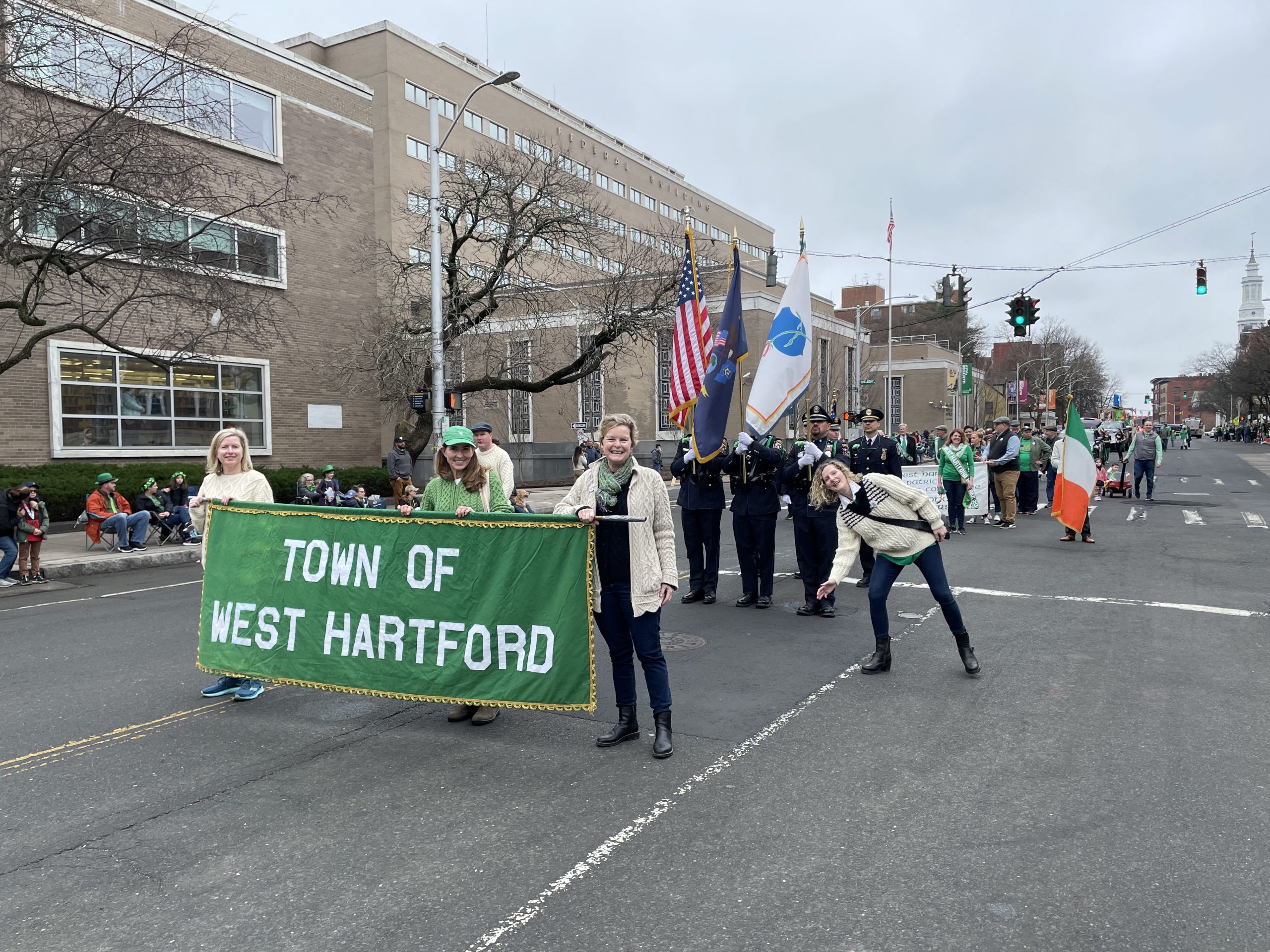From the West Hartford Archives: South Quaker Lane at Seymour Avenue

Audio By Carbonatix
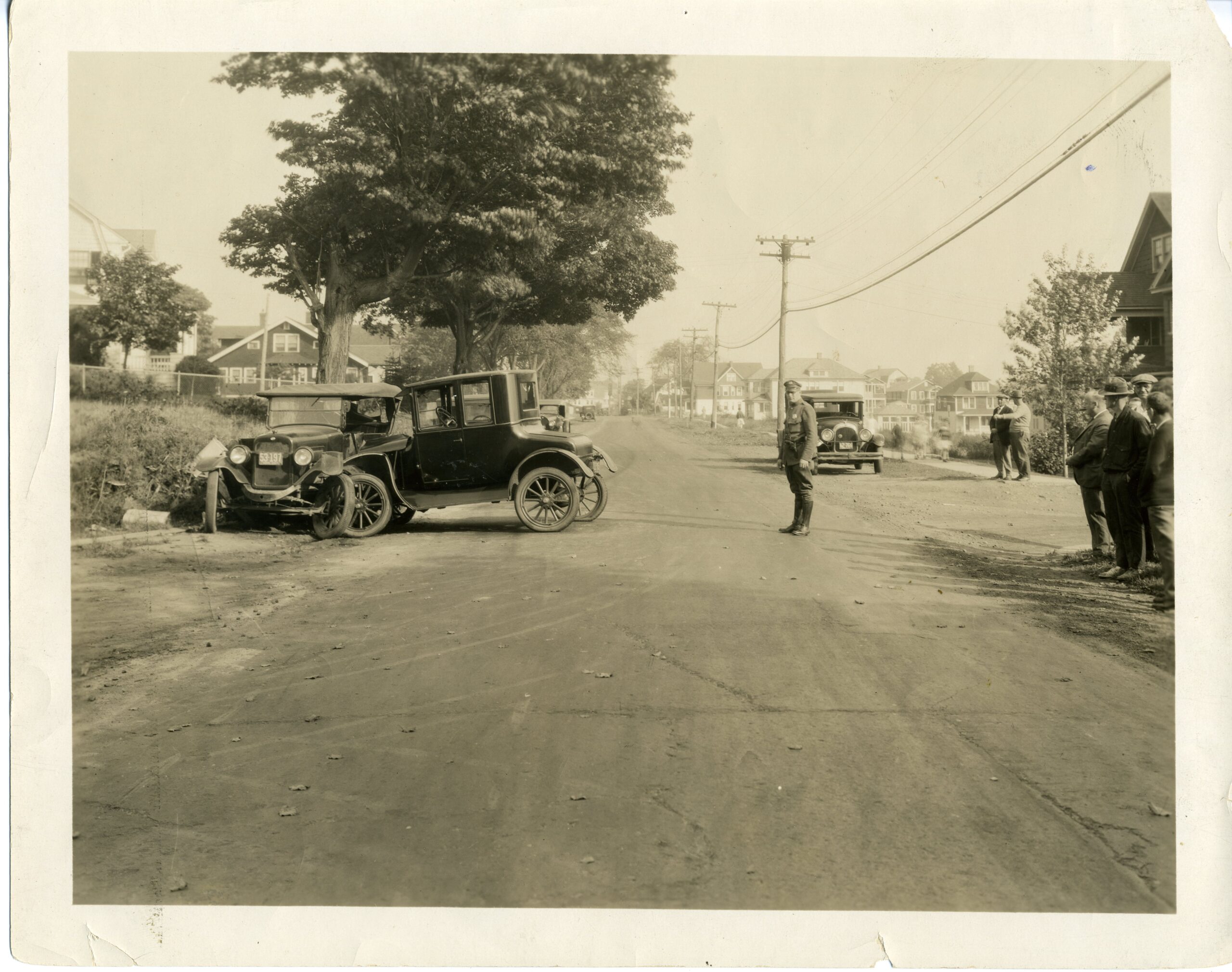
Corner of Seymour Avenue and South Quaker Lane, looking north toward Park Road, 1926. Photo courtesy of Noah Webster House & West Hartford Historical Society
Historian Jeff Murray takes a look into West Hartford’s past to uncover some surprising information, stir up some memories, or reflect on how much life has changed – or hasn’t changed at all. Enjoy this week’s ‘From West Hartford’s Archives’ …
By Jeff Murray
This photograph was taken by state police in 1926 at the corner of Seymour Avenue and South Quaker Lane, looking north towards Park Road, after a very obvious car crash. The general area was known, but last summer, I looked for help finding the specific location and reached out to fellow researcher Finn Ashworth, 2019 graduate of Conard High School and now West Hartford’s Planning & Zoning technician. He deployed the magic of zoning insight in the search and noted the lack of trolley lines, old trees, topography, and the specific type of housing found along South Quaker Lane.
Seymour Avenue was a product of the son of Edgar H. Seymour (1822-1906), who lived at the northeast corner of South Quaker Lane and Park Road. His Seymour ancestors in West Hartford date back to the middle of the 1700s, but it was during the life of Edgar H. Seymour and his children that the area south of Park Road began to be developed.
Despite their deep connection to the town, the Seymours opposed independence from Hartford in 1854. His son William E. Seymour, who worked as a teacher, bought land between Oakwood Avenue and South Quaker Lane, laying out what became known as Seymour Avenue. He married a woman, Margaret Soeckel, from one of West Hartford’s influential early German families.
To understand the presence of prominent German families in West Hartford, like the Sternbergs and Soeckels, one must appreciate the context in which they came to the United States. After the Napoleonic wars in the early 1800s, a loose fragmented confederation of 39 German-speaking states was formed, many governed by conservative, autocratic regimes. Rapid industrialization in continental Europe in the following decades led to poor working conditions, high unemployment, and economic disparities.
To make matters worse, poor harvests and acute food shortages in the middle of the 1840s caused widespread suffering. Workers began pushing for better wages, working conditions, and more political participation in a system dominated by single rulers or ruling families. There was also a strong movement to unify the fragmented German states into a single nation. The groundwork was laid for serious unrest across the continent in a year that would affect history for a century: 1848. At the beginning of that year, French street demonstrators rose up and abolished the monarchy, establishing the Second Republic. Demonstrations spread east into Austria and Germany. Some German monarchs gave in to demands to prevent further unrest, but uprisings continued in Prussia and Bavaria, calling for constitutional government, freedom of the press, and the formation of a parliament.

Painting of the revolutionary clashes in Berlin, Germany in March 1848 (Included in the public domain in the United States)
After initial successes of the revolutionaries, conservative forces led by the Prussian and Austrian armies regrouped and crushed the uprisings. Revolutionary assemblies were dissolved by force and violent crackdowns through 1849 decisively defeated the movement, restoring the old regimes. The 1848 revolutions (and attempted uprisings) set the stage for nationalism across Europe, the unification of Germany and Italy, and the ignition of political ideologies. It is no coincidence that the Communist Manifesto was published by Karl Marx and Friedrich Engels in 1848.
In Germany, many supporters of the revolutionaries were rooted out and forced into exile. The United States therefore saw a significant wave of immigration, many from the families of political activists and intellectuals pulled towards the opportunities here. One notable example was Carl Schurz, who fought in the 1848 revolutions and migrated to the U.S. in 1852. Schurz served as a general in the American Civil War and later served as Secretary of the Interior from 1877 to 1881.
West Hartford was no stranger to this migration. In 1852, Carl Sternberg, a liberal lawyer in Germany, fled to the United States, buying a massive farm on Sedgwick Road near Mountain Road a few years later. His son Adolph Sternberg was massively influential in the early modern history of West Hartford streets and education. The Sternberg home still stands at 216 Sedgwick Road.
Adolph Sternberg married Francesca Soeckel, who was born in Berlin in December 1849. In the immediate aftermath of the German counterrevolutions, she was swept up by her family and brought to the U.S. as a baby. After they arrived, a sister Margaret Soeckel was born. It was Maggie who married William E. Seymour of the South Quaker Lane family. Together, the couple had five children, although three died young. Their last daughter, Helen, died in 1974.
It is yet another reminder of how much history has been condensed into a short window – after all, it was only Helen’s grandparents who fled Germany in the aftermath of 1848. It may also be a reminder of why understanding current events can help one gain a better appreciation of our neighbors, who may have just left their own 1848 for a better world here.
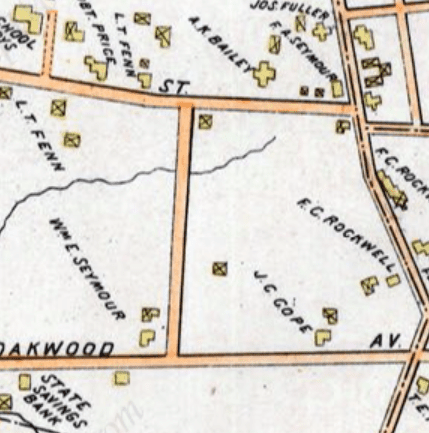
Map of Seymour Avenue and South Quaker Lane in 1896
William Seymour was a former selectman in West Hartford and registrar of voters, as well as a member of the board of tax assessors. He was also a long-term chairman of the Democratic Town Committee, whose voters were concentrated along Oakwood Avenue near Charter Oak.
Over time, he sold off patches of land near Oakwood Avenue until he died in 1905. His wife Maggie moved to New Britain Avenue, where she kept a boarding house for a number of years. Out of the hands of the Seymour family, Seymour Avenue followed the same path as other side streets in town – paving, street lights, and sewer and water connections.
The west side of Seymour Avenue, near South Quaker Lane, was in the possession of a wealthy farmer, Linus Fenn. In 1912, Fenn sold a significant amount of land on Seymour Avenue to the Town of West Hartford for a new school, owing to the rapid growth of Park Road and Oakwood Avenue. The so-called Seymour Avenue School (later renamed Smith School) was built in 1914-1915. The engineer who supervised its construction was Henry A. Wolcott (who would have his own school named after him 40 years later). By 1923, extra space was needed for the postwar growth of the town and a large addition was built.
Most of the houses along Seymour Avenue were built in the 1920s. Some were built by individual homeowners; many others were built by John Synnott, who later served on the Town Council in the 1930s. He and his family lived on Seymour Avenue across from Smith School. Seymour Avenue has a mix of single- and multi-family houses, the latter built during the 1920s at a time when working-class residents in this neighborhood rented flats here and built up wealth over time. Double and triple family houses made better use of the available land, especially in the grid north of Charter Oak School. The wave of building that was fully underway by 1930 was responsible for most, if not all, of the houses in this neighborhood.
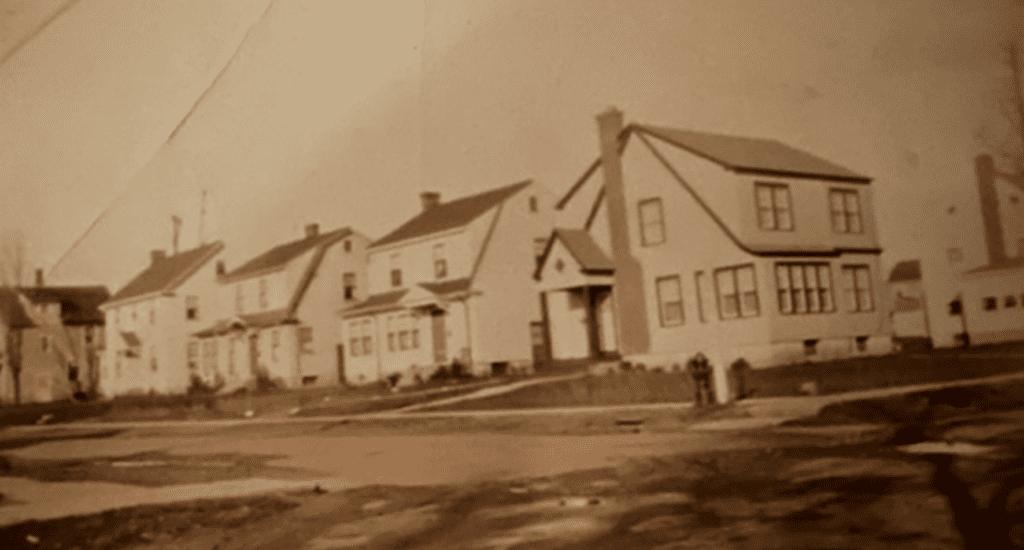
A row of houses built from the corner of Oakwood Avenue and Seymour Avenue by John Synnott. Photo Credit: Nancy Synnott Cahill
In 1948, Seymour Avenue School was renamed to Florence E. Smith School after its principal. Smith graduated from the Willimantic Normal School and began teaching in 1911. She was a supervisor of the elementary school in East Hampton when she was tapped to become principal of the Seymour School in the fall of 1926, the same year as the featured photograph. She succeeded Dorothy Maxfield as principal and oversaw the largest graded institution in West Hartford with nearly 800 pupils. After 22 years of service, the Board of Education surprised her and the entire PTA with the announcement (the Hartford Courant notes “the audience gasped delightedly and then broke forth in a long round of applause”). She stayed on for another 10 years and retired at the end of the school year in 1958. She moved back to Hebron and died at the age of 85 in 1976. She was principal to thousands of students throughout her career, including the son and granddaughter of the prevalent Seymour Avenue builder John Synnott.
Seymour Avenue holds so many different stories. It was laid out by William E. Seymour, member of a dynasty in West Hartford, and the daughter of German emigrants fleeing a regime hostile to its political enemies. It was carved out of farmland all along South Quaker Lane and further cut up for a school and a row of houses to accommodate the explosion of the population in this section of town in the 1910s and 1920s. It would become an easy outlet to the WWII housing off of Oakwood Avenue and Kennedy Park even later. Seymour Avenue was central to the Charter Oak neighborhood and only time will tell what role it will play in the future.
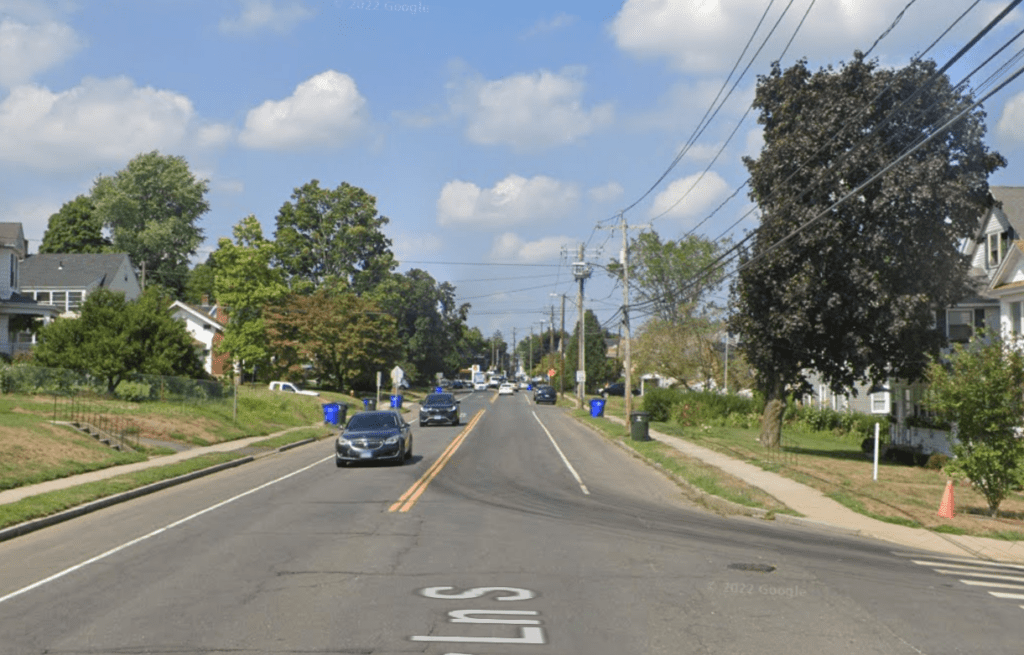
Corner of Seymour Avenue and South Quaker Lane, looking north toward Park Road. Google Street view
Jeff Murray was born and raised in West Hartford and has been involved with the Noah Webster House & West Hartford Historical Society since 2011 when he was a high school student and won the Meyer Prize for his essay on local history. Jeff routinely volunteers as local history researcher uncovering information for numerous museum programs such as the West Hartford House Tour and West Hartford Hauntings. Jeff works as a data analyst at Pratt & Whitney.
Like what you see here? Click here to subscribe to We-Ha’s newsletter so you’ll always be in the know about what’s happening in West Hartford! Click the blue button below to become a supporter of We-Ha.com and our efforts to continue producing quality journalism.



